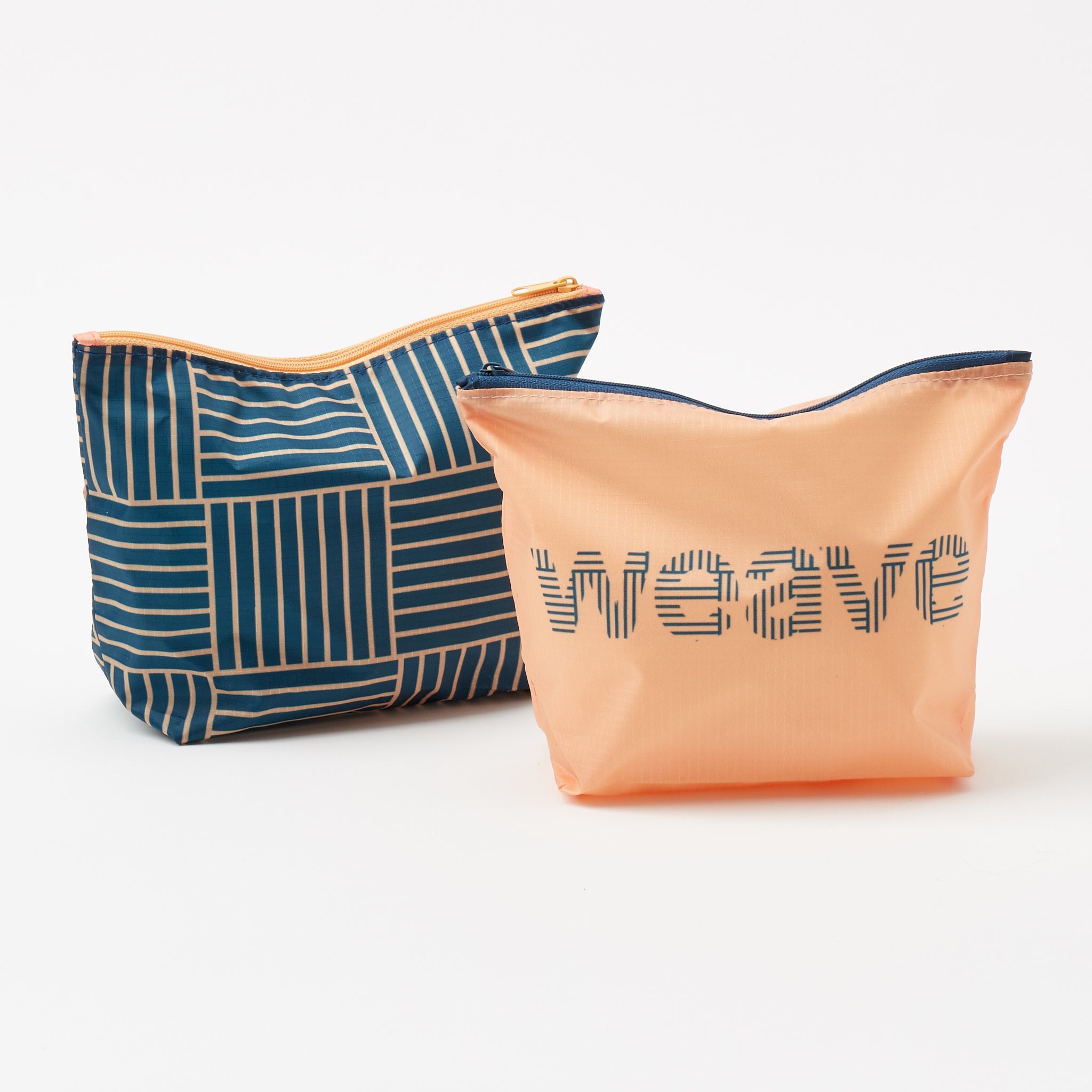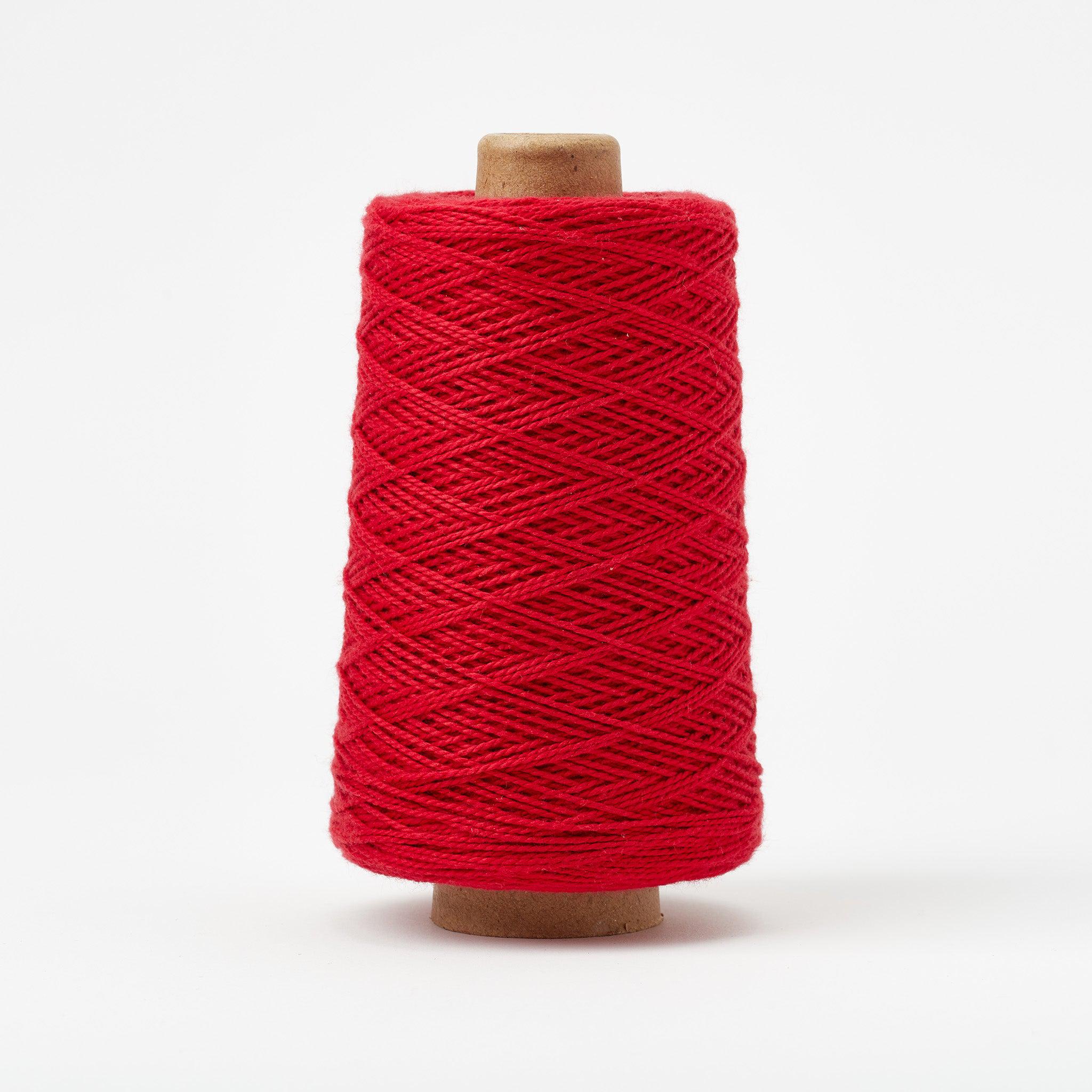Shopping Cart
*continental US addresses only

*continental US addresses only
Your Cart is Empty





The rigid heddle loom has always been the sweet spot for me between the simplicity of a frame loom and the mechanical assist of a floor loom. While the know-how I offer is specifically geared towards the rigid-heddle weaver, a lot of these pearls pertain to all weaving. I like to say I’m happy to teach folks a good first way to get things done, and then we can dig around in all the nooks and crannies of the know-how playbook. (If you want to hear me make my case for the rigid heddle loom, I have a free class, Why This Loom.)
One thing that the loom does extraordinarily well is tension your yarn. Weavers often think this is their job, but it isn’t. Your job isn’t to tension the yarn, but create an environment where the loom can tension the yarn for you. The work of the hand meets the work of the tool.
Weavers try very hard to keep tight tension on their yarn when winding the warp, packing the beam, and tying on. This is not a place where tension matters, but technique can inform how even your warp tension will be once you crank on the tension with the assistance of the loom. Beginners often stress about everything because they don't know what matters.
While strictly not related to creating even tension, it is tension related. Winding your yarn under light tension will ensure that you don’t foreshorten your warp. If your yarns appear to be loose in spots as you are winding, it isn’t something to stress about.
This is counterintuitive, but it works. The method is popularly known as the “crank and yank”. I recently excerpted a lesson from the Spring 2021 weave-along and published it on the Yarnworker YouTube channel. (If a picture is worth a thousand words, a video is worth tenfold.) I find this to be an all-purpose way to pack the beam for a wide variety of fiber types and warp sizes. It is easy to do by yourself and takes a lot of the stress out of the process.
Start by cutting short lengths of paper about 3 feet long and wide enough to extend past the width of your warp. I prefer Kraft paper as my packing material that is around 24lb weight. The rolls don’t always have this information, so think of something thicker than printer paper, but thinner than cardstock.
Rather than holding onto the warp, hold onto the paper as you wind on (lower left). Stop every four or five rotations and “yank” (lower right) the warp by gently, but firmly, pulling on the warp. Resist combing or raking your warp. Let the loom do the work for you!

Regardless of the knot you use to tie on—I have a video that demonstrates the three most popular knots—when you check to see if your tension is even, use a flat hand and feel for soft spots with your palm and not your fingertips. It will be much easier to spot tension differences using this technique.

When teaching, I often tie on so one area is under slightly less tension than another. Then each weaver pats the warp with their palm to see if they can find the soft spot. It is a great lightbulb moment as they find the area every time!
After you have secured your warp, you can crank on the tight tension you have been longing for. When you do this, tension your loom from the front and the back. Cranking on the tension from the back, will take up any remaining slack under the warp layers.
It still happens that while you are weaving an end, an area, or an entire layer, goes slack.
For individual ends, I keep at hand a bunch of 3-inch S hooks that weigh just over 2 ounces, to weight individual warp ends.

If a specific area loses tension, you can use a small piece of cardboard to use as a shim under that area on the front or back beam. The shim will have to be moved each time you advance. You may find that you only need it temporarily and the tension will right itself after you advance.
The most common area we see slack is at the selvedges. This can be caused by either your packing material being too soft, too short, or by draw-in.
If your packing material isn’t wide or sturdy enough, it will cause the warp to fold down at the edges as it winds around the back beam. To prevent this, be sure your paper is at least two inches, preferably four inches, wider than your warp.
Before you shim the selvedge area, be sure that it is actually a tension issue. If your warp is starting to “smile” at you with the edges growing at a faster rate than the middle, try giving yourself more slack in the weft by increasing your weft angle or bubble.
Most commonly, it is the slotted shed layer that goes a bit slack. In general, it is a bit sloppier because the yarns aren’t restricted by the hole. To weight just your slotted layer, place the heddle in the up position, slip a flat stick (I use a warping stick) between the layers so it is sitting on top of the slotted layer, then slide it up over the back beam, and let it hang off the back of the loom. You can add weights on either side of the stick to give it more heft.
Some weavers like to tie on in the down position to slightly increase the tension on their slotted layer. This is particularly helpful for inelastic yarns, such as linen.
All these little bits of know-how are gained over time. That is the joy of the journey.
Smitten by small looms and big plans, most of my weaving life is focused on creating know-how for the rigid-heddle weaver including collaborating with Gist to create the PlayBox series. I host Yarnworker, a site for rigid-heddle know-how and inspirations and its companion learning space Yarnworker School. From my home in central New Mexico, I weave, write about weaving, and dream-up, film, edit, and host the weave-alongs and classes. This space is supported by an amazing Patreon community who make all the weaves possible.